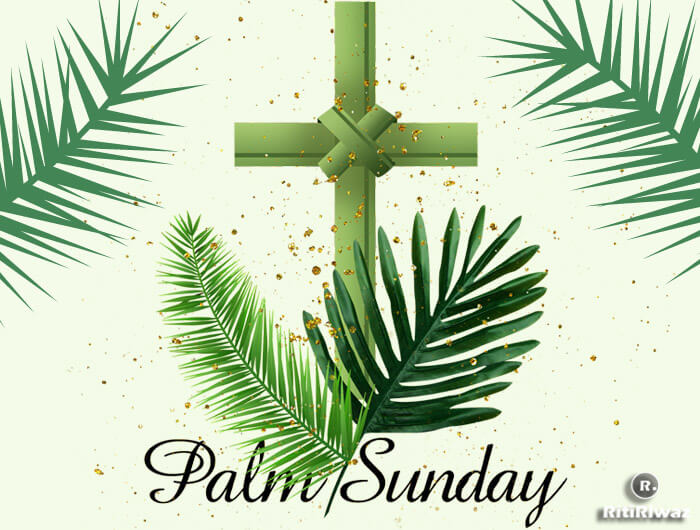Palm Sunday – 13th April

“Palm Sunday” (also known as “Passion Sunday”) celebrates Jesus’ entry into Jerusalem, riding on a donkey, and falls on Sunday before Easter, the final Sunday of Lent.
This is an important event that had been anticipated hundreds of years prior, with prophesies like, “Rejoice greatly, Daughter Zion! Shout, Daughter Jerusalem! See, your king comes to you, righteous and victorious, lowly and riding on a donkey, on a colt, the foal of a donkey,” (Zechariah 9:9) being written long before Jesus was born.
The significance of “Palm” in the name of this day comes from the palm branches that were placed on the road in anticipation of Jesus’ arrival. Palm Sunday signals the end of Lent, the 40-day period of fasting and reflection that begins on Ash Wednesday, and kicks off Holy Week, the seven days leading up to Easter.
“Holy Week” is the week leading up to Easter. The week begins on “Palm Sunday” (which is Sunday, April 13, 2025), it consists of other significant days such as “Maundy/Holy Thursday” and “Good Friday,” and ends on “Holy Saturday,” (which is Saturday, April 19th, 2025).
When is Palm Sunday
Each year, Palm Sunday is celebrated the Sunday before Easter. The date of Easter varies — it’s determined by the moon and usually falls on the first Sunday after the first full moon on or after the Spring equinox.
This year, Easter falls on April 20, 2025. Good Friday is two days before Easter, on April 18, 2025. This means Palm Sunday will be on April 13th, 2025.
History of Palm Sunday
Palm Sunday is also known as Passion Sunday because the passion narrative, a name for the final acts and suffering of Jesus, is recounted on this day. After his arrival in Jerusalem, celebrated with a parade of palms, Jesus embarks on a week of teaching and torture that ends in his crucifixion on Good Friday.
You may recall the stories of Jesus driving the money-changers from the Temple, the Last Supper, and Judas’s kiss of betrayal. These events all occurred during the last few days of Jesus’s life. Palm Sunday is both a happy and sad day. Christians are happy because they are singing praises to Jesus but also sad because they know Jesus died less than a week after his arrival in Jerusalem.
How Palm Sunday is celebrated
Palm Sunday is celebrated differently throughout the Christian world. They then carry them in a ritual procession into the church, where the leaves are blessed with holy water. In churches on Palm Sunday Christians are given small palm crosses made from palm leaves. Leftover palm crosses are kept for a special church service on the first day of Lent, the following year, when they are burnt (Ash Wednesday). This ash is put on people’s foreheads.
Traditionally, worshippers enact the entry of Jesus into Jerusalem by the waving of palm branches and singing songs of celebration. Sometimes this is accompanied by a processional into the church. In many churches, children are an integral part of this service since they enjoy processions and activities as a part of worship. This provides a good opportunity to involve them in the worship life of the community of Faith. In many more liturgical churches, children are encouraged to craft palm leaves that were used for the Sunday processional into crosses to help make the connection between the celebration of Palm Sunday and the impending events of Holy Week. In some traditions, a donkey forms part of the Palm Sunday parade.
In some churches, the palm branches are burned the following year to serve as the ashes for Ash Wednesday. Palm Sunday is also sometimes referred to as Passion Sunday and Branch Sunday. In countries where palms are unavailable, believers use pussy willow or other types of branches to mark the festival.






